
MENUMENU
TALK TO AN EXPERT
Special Hours: 7AM – 6PM PST
TALK TO AN EXPERT
Special Hours: 7AM – 6PM PST
Ham radios can sometimes feel like magic. They allow you to travel the world right from your chair by connecting you to people thousands of miles away in exotic places. Sadly, without a reliable ham radio power source, your system won’t take you very far. Enter lithium batteries – an excellent choice for ham radio batteries.
Read on as we take a closer look at how to make the switch!
Ham radios are operated by amateurs and enthusiasts capable of sending and receiving radio broadcasts worldwide. At their most basic, a ham radio system consists of a transmitter, receiver, and antenna. Some setups will opt for a transceiver instead, which combines a receiver and transmitter into one.
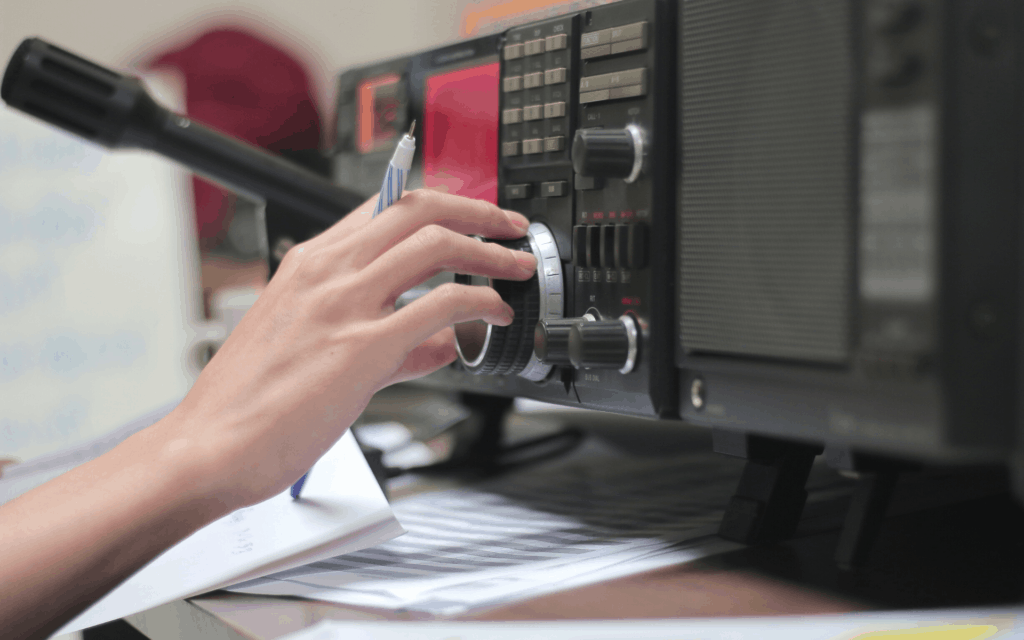
The term “ham” originated in the early 20th century as an insult for amateur radio operators but ended up sticking. Certain parts of the radio frequency spectrum are set aside for ham radio operators. Ham radio operators can broadcast non-commercially and communicate with people right across the street or all the way across the globe.
Ham operators broadcasting from home likely have easy access to power by plugging directly into a wall outlet. Most radios need a 12V power supply and can use a converter to plug into household AC power. Those looking for a more portable or backup power setup will need to choose an option for on-the-go power. The most common options are generators, batteries, and solar power.
Gas generators can provide quick, easy power. However, they’re heavy, can be noisy, and may not be reliable. None of these are ideal for ham operators who are on the move.
Solar is a great option that’s growing in popularity due to the rising interest in off-grid setups. As the name implies, solar power systems rely on the sun to produce power. Therefore, solar power setups also include a battery system so that you can use your ham radio after the sun goes down. The need for solar panels and batteries makes this one of the most costly options available.
Batteries are an excellent option for powering your ham radio system. 12V ham radio batteries are quiet, portable, and can pair with generators, the power grid, or a solar power system. This flexibility provides a renewable off-grid option that allows you to use your ham radio anywhere, anytime.
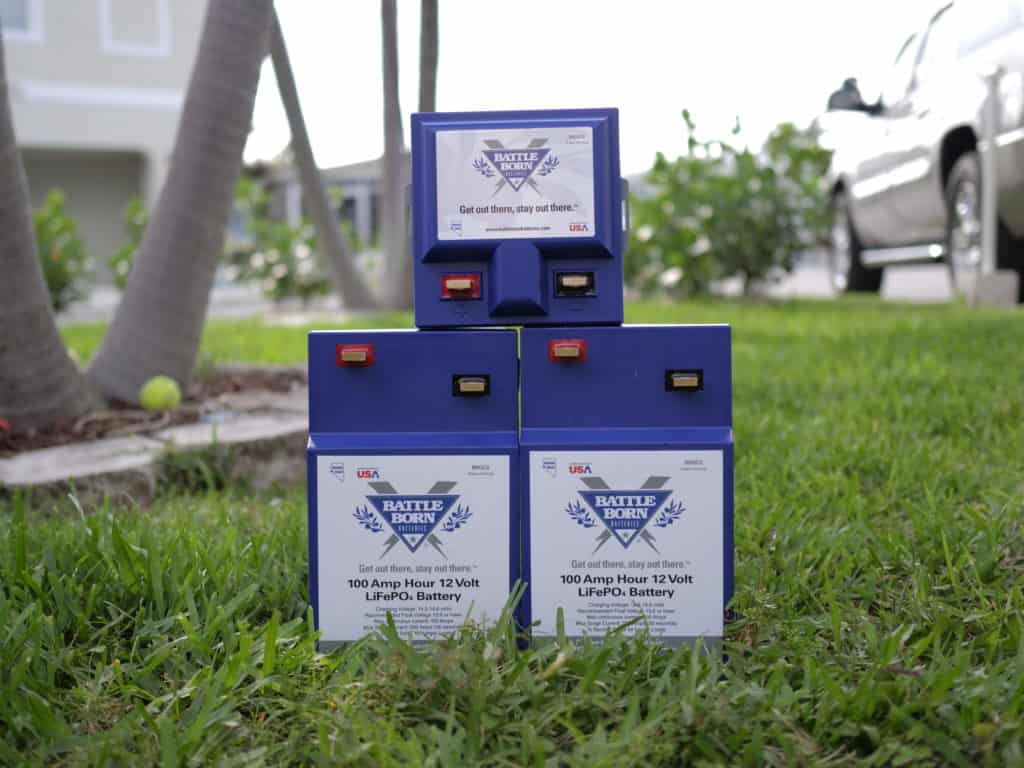
Using batteries to power your portable ham radio system is a great choice to provide a consistent, reliable power source. There are a few different options for ham radio batteries, but the best is the lithium battery. Let’s take a look at the advantages of using a lithium ham radio battery.
Once charged, lithium batteries will only lose about 2-3% of their stored energy per month when you are not using them. Therefore, a fully charged battery could be stored for more than two years and still have a charge remaining. This is particularly beneficial for ham operators who may not regularly use their on-the-go system.
Additionally, your lithium ham radio battery will likely last you more than ten years and thousands of charge cycles. Manufacturers like Battle Born offer a 10-year warranty on all of their lithium batteries.
All batteries perform better under moderate temperatures. However, as temperatures plunge, the benefits of lithium batteries become apparent as they significantly outperform traditional lead-acid in colder weather. The main restriction on lithium batteries is that they will not typically accept a charge below 32 degrees Fahrenheit. However, at temperatures below freezing, lithium batteries can still discharge and provide power to your ham radio. For example, our lithium batteries can safely provide power at temperatures down to -4 degrees Fahrenheit without causing damage.
Draining traditional 12-volt lead-acid batteries below 50% of their rated capacity causes damage and shortens their life. Luckily, discharging lithium batteries below 80% or more of their capacity will not cause harm. This means that you can power your ham radio for about twice as long using a lithium battery as compared to a traditional lead-acid battery.
For a portable ham radio battery, you’ll definitely want to reduce the weight and bulkiness of your setup as much as possible. Lithium batteries don’t have lead plates inside so they weigh about half of what a comparable lead-acid battery would.
Everyone’s energy needs are different. The size of your ham radio battery depends on how much current your ham radio draws and how long you plan to operate your ham radio before recharging the battery.
Refer to your user manual to determine how much current your ham radio draws. Keep in mind that ham radios draw a lot more current while transmitting than they do while receiving. Once you know the current needs for your ham radio, you simply multiply the current, in amps, by the number of hours you plan to use your radio to determine your required battery capacity in amp-hours.
This short video has a great explanation of how to perform the calculation:
Modern ham radios operate at 13.8 volts DC, allowing them to be powered directly off a 12-volt battery without requiring a power supply. This makes wiring your ham radio to a 12V lithium battery relatively simple.
The first step is to determine the proper fuse and wire sizes based on the maximum current draw of your ham radio. Make sure to choose a fuse that is rated 20% higher than the maximum current rating on your ham radio or you’ll continually blow a fuse. Use a wire gauge chart to select the proper wire size. If you plan to have a long cable run between your battery and your ham radio, choose a wire that is one or two sizes bigger to minimize the voltage drop. If the voltage drop in your wiring and fuse is too high, your ham radio won’t turn on.
After you’ve selected your fuse and wire, the next step is to connect everything. Connect one end of the first wire to the positive terminal of your battery using a terminal lug and the other end to one side of the fuse block. Connect another wire from the other side of the fuse block to the positive terminal of your ham radio. Lastly, connect a wire from the negative terminal of your ham radio to the negative terminal of your battery. That’s it!

Charging lithium batteries requires a dedicated lithium battery charge controller. Charge controllers ensure your lithium batteries receive the proper voltage and current to charge safely and efficiently. If you plan to charge your lithium batteries by plugging them into a standard wall outlet, consider Battle Born’s series of lithium battery chargers. If you’re charging your batteries using a solar panel system, you’ll need a solar charger instead.
Lithium batteries can even be used in vehicles as a dedicated power source that will not drain the starting battery system. They can be charged from the vehicle’s alternator, but it’s suggested to use a DC-DC converter to provide the proper charge and not overload the alternator.
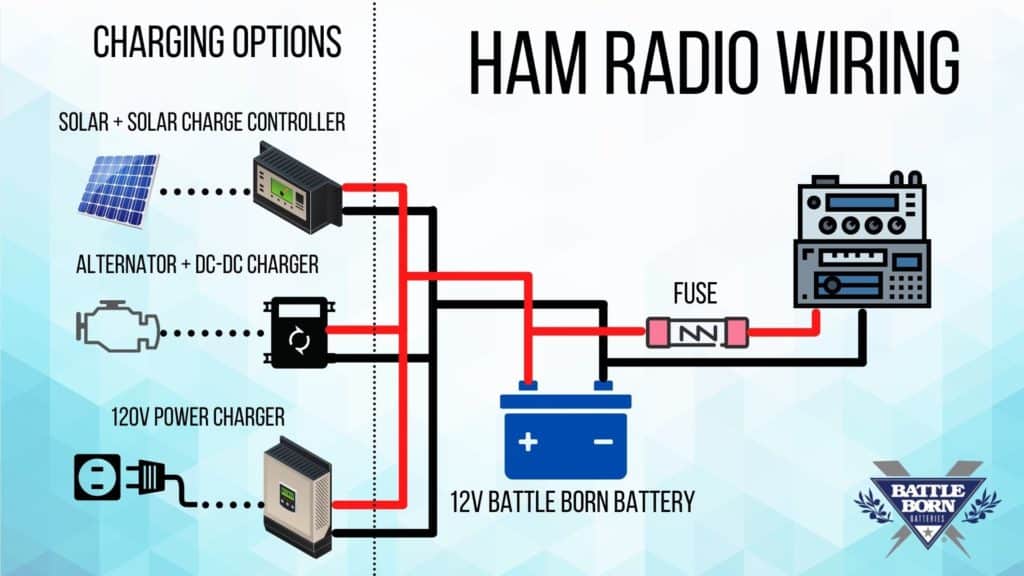
As always, make sure to consult the owner’s manual for your batteries, charge controller, and other hardware for information on how to install and use everything properly.
Running the power through a lithium battery can be beneficial even when using a ham radio where you have an AC power source. If you are ever to lose AC power, the battery will keep your systems up and running. Using a lithium battery charger will power the battery and provide the energy needed for the radio until the mains power goes down and the battery takes over. For those wanting to use a ham radio as a means of emergency communication having a reliable backup battery power source is critical.
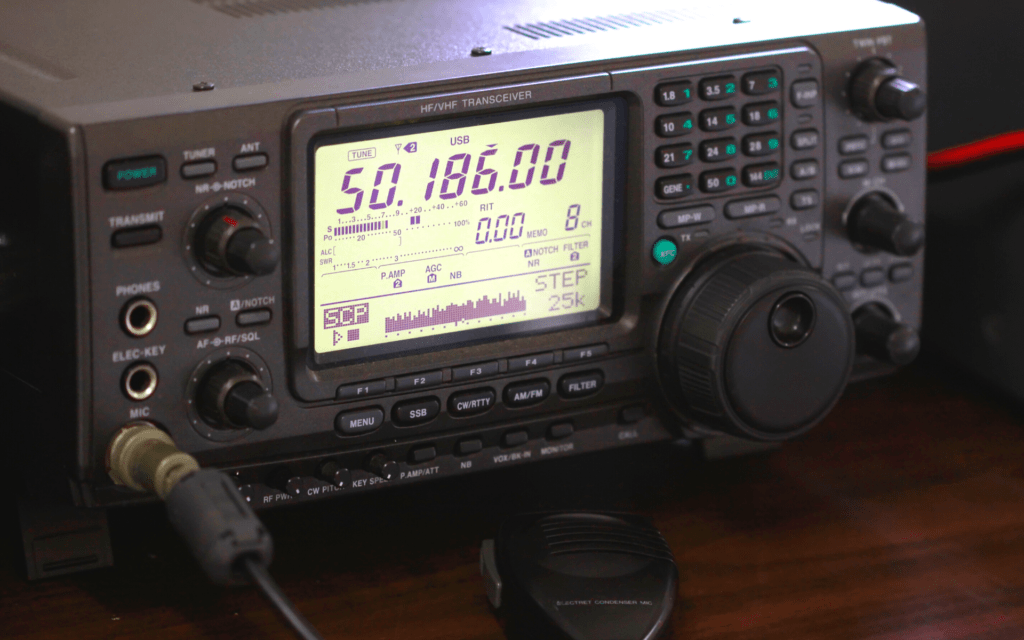
As you can see, lithium batteries can be a total game-changer for ham operators on the go. Their superior portability, efficiency, reliability, and performance at low temperatures make them an excellent choice for your next ham radio battery.
Happy broadcasting!
We know that building or upgrading an electrical system can be overwhelming, so we’re here to help. Our Reno, Nevada-based sales and customer service team is standing by at (855) 292-2831 to take your questions!
Also, join us on Facebook, Instagram, and YouTube to learn more about how lithium battery systems can power your lifestyle, see how others have built their systems, and gain the confidence to get out there and stay out there.
Shop Best Sellers

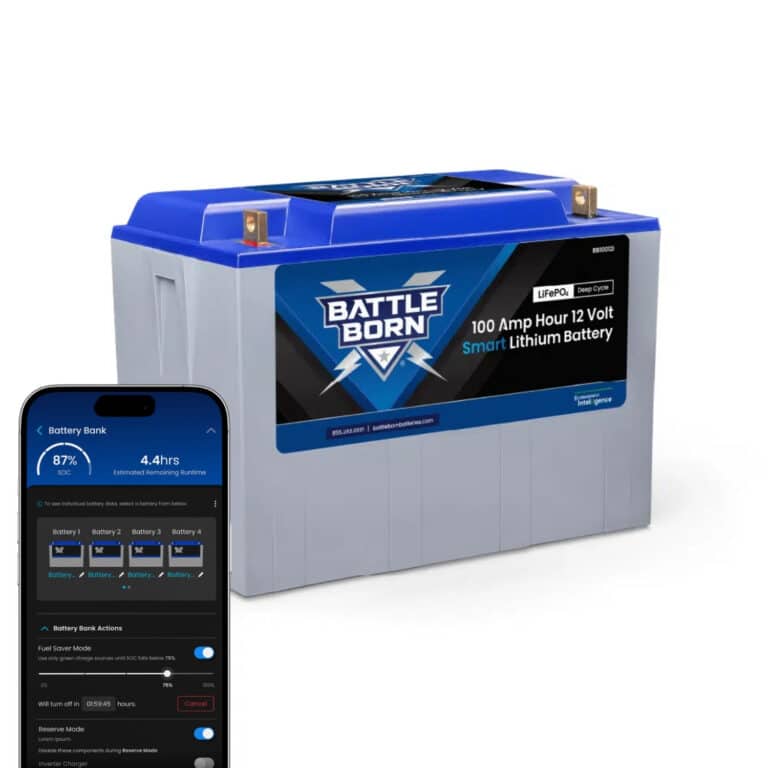

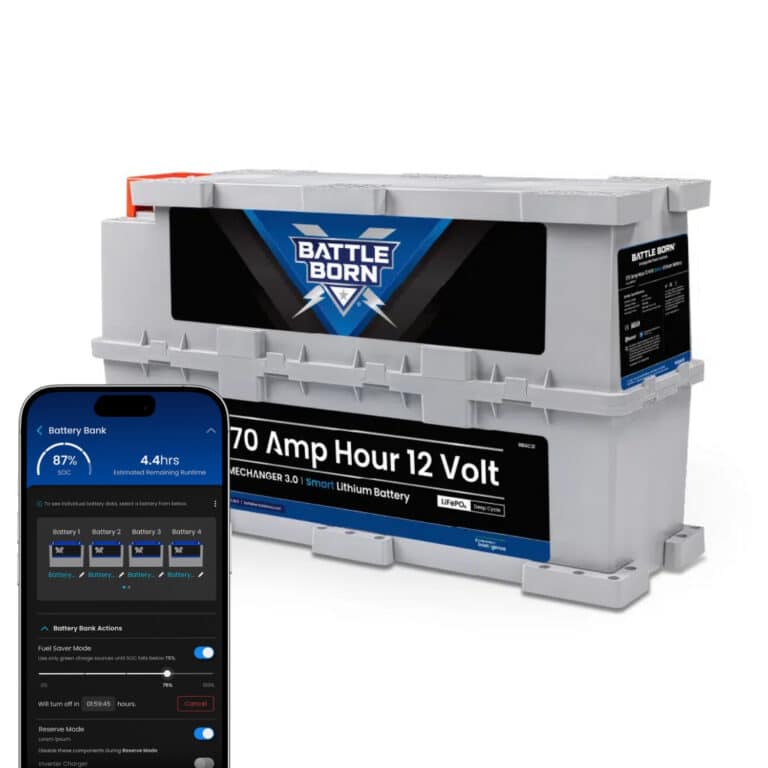




Ask a technical specialist now at 855.292.2831
Stay in the Know
4 thoughts on “How To Use Lithium Batteries For Your Ham Radio Power Source”
I would like to convert my home ham setup to use Lithium Batteries and phase out the AGM’s
One goal is to be able to turn off the old-style linear Astron 50amp supply, it runs very warm
and must be wasting a lot of watts most of the time in heat just loafing at about a 5 amp draw.
I have 20 x 170watt solar panels I picked up used for $20 each , specs are 48volts peak.
I want to use a of the panels to power the battery charging and station and only turn on the
big supply when the battery is low or all the radios need to run full power for contests etc.
the charge controller needs to be in a metal case that be be ground to the station ground rod and have close to ZERO EMI/RFI .
I was disappointed with the mini controllers I got from powerworks it has a lot of RFI around 28mhz
even with lots of fairrite cores added to it.
https://powerwerx.com/mppt-300w-solar-charge-controller
nice looking device but not quite right for the ham home.
Will the lipo battery like the intermittent loads from ham radio and switch from charge to drain okay every time i use the transmitter ? what charge controller would be best for the under 50volt size of pannels we are seeing so much on the used market???
I really like the all metal box the SOK battery are in , that’s got to help keep the charge controller RFI from getting out except for the main 2 wires that can get firerite cores added.
okay sell me your ideas on a set up for home , peak load is 45-55 amps , normal is 5 amps it runs 24/7
having a inverter for 500w to run the computer might be nice to.
anyone test the growwatt inverters for RFI ???
my sunnyboy 7 works well on the house with very little RFI and has never gave any problems from the 400w HF signal.
Hello there! Please give our technical sales team a call at 855-292-2831 if you haven’t already so we can assess your system in the best way possible. Thanks for reaching out and let us know if you have any additional questions!
My 100w (max) output TRX (Yaesu FT-891) draws about 25 amps on TX. What battery is capable of handling that load?
I have an off-grid radio shack powered by PV and batteries.
Currently I am using a 12Ah LiFePO4 battery for my radio. The TRX achieves 50 to 75w (on a good day) RF output, not the 100w that it would put out if attached to a grid sourced power supply. The battery mfg said something about a “C” value being too low, and that my battery could not provide the output in amps my radio needed.
Question to you: What battery (specification) does my radio need to achieve its 100w output?
I have 3x 12v 100ah liFepO4 batteries charged by 2x 330watt solar panels with an Epever charge controller and it works well